Looking to take your corn garden to the next level? Searching for tips on adding companion plants for an even better crop? Look no further – this comprehensive list of companion plants perfect for corn will give you all the information and useful tips you need to make the most of every harvest! These companion plants have been carefully chosen to help increase yields, repel pests, or provide extra nutrition – giving your corn the perfect environment to thrive.
Companion Planting Guides
Growing corn can be a fun and rewarding experience — not to mention, it’s a great way to add some deliciousness to your garden! But did you know that companion planting with corn is also incredibly beneficial? Not only will adding companion plants create natural pesticides and deter pests, but they can also enrich the soil around the corn and help it grow strong.
In this guide, we’ll cover everything you need to know about companion planting with corn. From which plants are best for growing alongside your corn, to tips on maintaining conditions suitable for both species – we’ve got you covered!
Corn Companion Plants
Companion planting is an age-old gardening practice that has been around since ancient times. Planting certain plants near or alongside corn can help boost yields because of the many benefits companion plants offer. Some of these benefits include increased pollination, pest control, improved soil quality, and reduced weed competition.
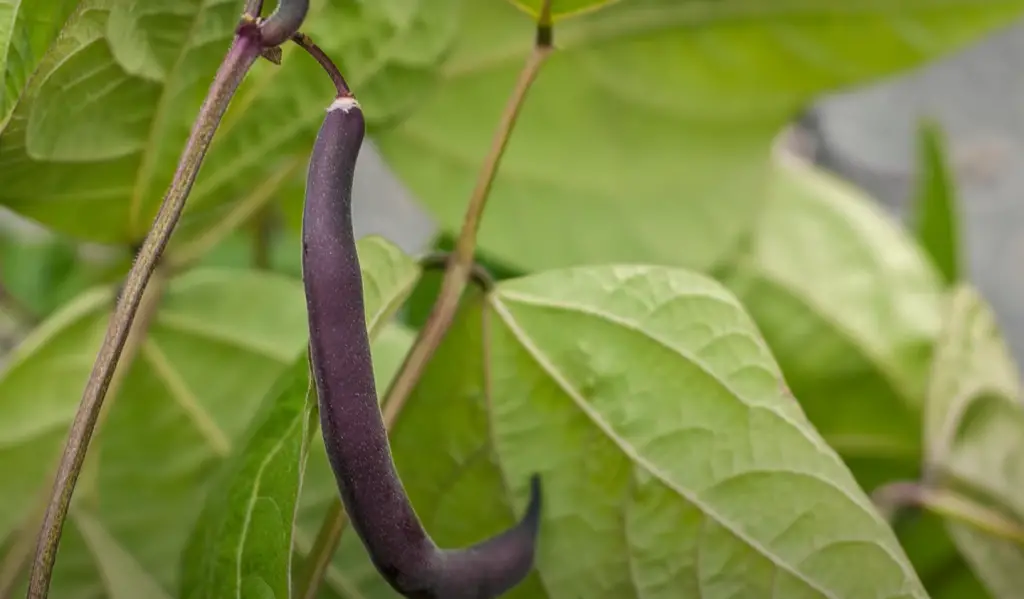
When selecting companion plants for your corn crop, it’s important to choose those that will be compatible with each other and not compete with your corn for resources such as light, nutrients and water. Here are a few recommended companion plants for corn.
Cucumber
Cucumber is an ideal companion plant for corn. It will benefit from the tall structure of the corn, which provides shade to protect its delicate leaves and fruit. Plant cucumbers near your corn plants in order to maximize each other’s growth potential. Cucumbers are heavy feeders and can use up some of the available soil nutrients, but this does not compete with the needs of your corn since they prefer different types of food. Additionally, when vines grow together, pests have a harder time finding individual plants to attack. Pests such as aphids may be deterred by keeping these companion plants close together. In addition to attracting beneficial insects like ladybugs, cucumbers also repel nematodes that can damage corn roots if left unchecked. Planting cucumbers and corn close together is a great way to ensure a successful harvest!
Melons
Melons are great companion plants for corn, as they require a lot of water and can help with weed control. Melons provide shade to the bottom leaves of the corn plant, while also creating an area of moist soil that will not dry out as quickly. Melons should be planted after the last frost, typically two weeks after planting corn. They should also be planted at least three feet away from any other crops. When harvesting melons, it is important to remember that their stems must still attach to the vine in order for them to ripen properly. Keep this in mind when selecting your companion plants for corn! Additionally, melon vines have sharp thorns which can make maintenance difficult – so make sure you choose a variety with thorns that are not too long. Finally, melon plants do best with a lot of nitrogen so it is best to fertilize them throughout the growing season. With the right care and attention, companion planting corn with melons can yield great results! Try experimenting with different varieties and see which ones you like best.
Pole beans
Pole beans are one of the best companions for corn. These climbing plants help to support and protect the stalks of the tall Corn plants as they grow, while also providing an additional crop in your garden. When planting Pole Beans next to Corn, make sure to choose a variety that is bush-type rather than vine-type, as this will provide more stability for your Corn stalks without taking away any sunlight or nutrients from them. Planting Pole Beans alongside other vegetables like squash and pumpkins can also improve pollination and yield higher quality fruits due to the increased insect activity around these crops. Additionally, Pole Beans act as natural mulch which helps to keep moisture in the soil and reduce weeds from invading your garden beds. Try growing a few Pole Beans next to your Corn plants this season for an extra boost in productivity!
Winter squashes
Winter squashes such as pumpkins and butternut squash are perfect companion plants for corn. They provide a large canopy of foliage that helps to retain moisture, shade the roots from the sun, and create a microclimate that helps protect the corn from hot temperatures.
The only downside is that some winter squashes, such as pumpkin, tend to be rampant spreaders and can easily overrun your garden! Make sure to choose non-invasive varieties or grow them in separate beds.Borage
Borage (Borago officinalis) is a member of the Boraginaceae family and is an annual herb that produces bright star-shaped flowers. This herb can be used to control pests, attract beneficial insects, and improve soil fertility around corn plants. Borage also helps to suppress weeds and provides added nitrogen for the health of your corn crop. When planting borage near your corn patch, make sure to keep it away from small children or animals as it can be toxic when ingested. For best results, sow borage seeds in early spring just before the last frost. Borage flowers can remain blooming for several weeks throughout the summer season, providing an abundance of pollen for bees and other pollinators that may help with pollinating your corn plants.

You can also use borage to make a delicious tea! Simply steep the leaves of the plant in hot water and enjoy. Borage tea is known to be beneficial for digestion, reduce inflammation, and may even help with anxiety and stress. Enjoy this great companion plant for many seasons to come!
Dill
Dill is a popular companion plant for corn and can be an excellent addition to your garden. This herb provides attractive foliage and flowers that produce an aroma some find delightful. Dill is also known for attracting beneficial insects, such as ladybugs, lacewings, and hoverflies which are especially useful in keeping aphids away from nearby plants like corn. Additionally, the deep taproot of dill can help draw up moisture and nutrients from deep within the soil which may benefit the root system of nearby plants like corn. Planting dill near corn can also act as a natural pesticide because its strong scent confuses insect pests that may otherwise feed on the crop. When planting, make sure to give dill enough space as it grows very tall, up to 6 feet in height. Keep in mind that dill is best planted alongside corn after the last frost of spring.
Horehound
Horehound (Marrubium vulgare) is an herb that makes a perfect companion plant for corn. It helps to ward off harmful insects, such as cutworms and armyworms, which can cause damage to your corn crop. Horehound also has the added benefit of producing a sweet scent, which can help mask any unpleasant odors coming from your corn plants. When grown in close proximity to one another, horehound and corn can create a synergistic effect which boosts both their yields. Keep in mind that horehound can become invasive if left unchecked, so you’ll want to make sure you keep it pruned back for best results.
Hyssop
Hyssop has a long history of being used to ward off pests and diseases, making it the perfect addition to your corn garden. It’s known to repel cabbage moths and other insects that may harm your corn plants, while also attracting beneficial insects such as honeybees and bumblebees. Planting hyssop near your corn can help give the crops an extra layer of pest protection. Additionally, hyssop is said to improve the taste of sweet corn by adding a hint of anise flavor. To create a lush backdrop for your corn, plant several bunches of hyssop around its perimeter. Not only does this make for a beautiful display but it also provides added benefits to your corn plants. Hyssop is an easy-to-care-for plant and does well in full sun with regular watering.
With its vibrant purple flowers and strong scent, hyssop makes a great companion for sweet corn. Try adding some of these lovely plants to your garden today!Marigolds
Marigolds are popular companion plants for corn because they also attract pollinators and help to protect the corn from harmful pests. Marigolds produce a strong smell that repels certain insects, making them an ideal choice for keeping away common pests such as aphids, beetles, and thrips. Planting marigolds around your corn can also help to draw beneficial predatory insects like ladybugs that will feed on pest larvae and help keep your crop healthy. Marigolds require full sun and regular watering in order to thrive, so make sure you give them enough space and water when planting next to your corn! Additionally, be careful not to over-fertilize marigold plants since too much nitrogen can interfere with their insect-repelling qualities. With the right care and placement, marigolds can make a great companion for your corn!
Mint
Mint is one of the most popular companion plants for corn. Mint helps repel insects that could potentially harm your corn crop, such as aphids and caterpillars. It also produces a pleasant scent which can help deter pests from nearby crops.
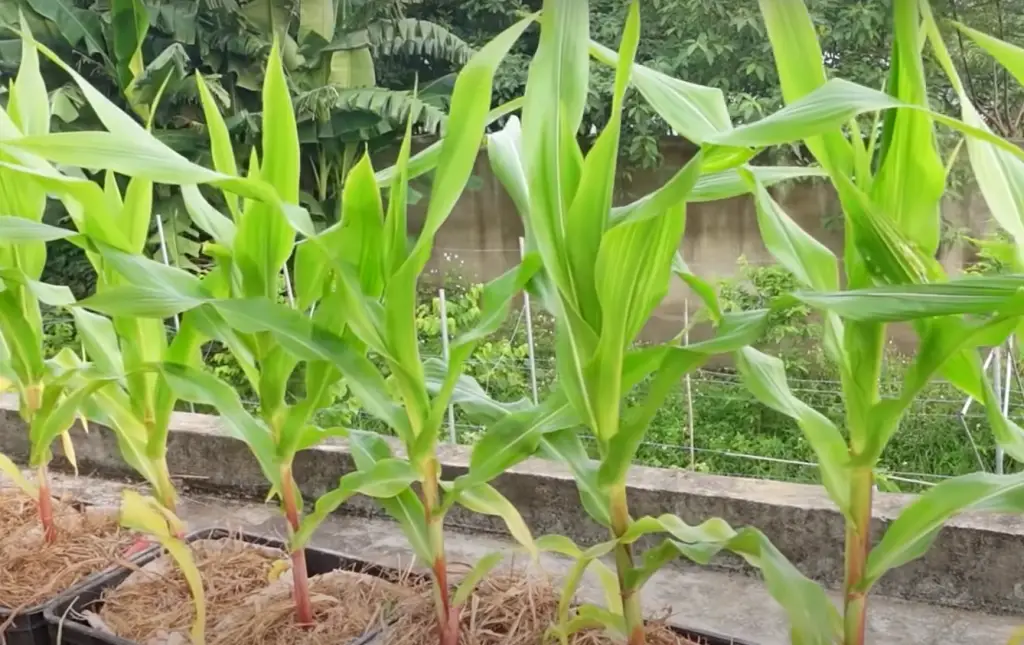
Additionally, mint has been known to increase the sweetness of the ears of corn when grown in close proximity. Planting it near your corn will help keep away pests while adding flavor to your harvest!
Nasturtiums
Nasturtiums are a great companion plant for corn. These plants provide shade to the soil beneath them, reducing moisture loss and keeping weeds down. They are also known for their pest-deterrent abilities; aphids, whiteflies, and squash bugs tend to avoid nasturtiums. Furthermore, these vibrant flowers bring a splash of color to the garden when planted with corn! To get started with nasturtiums as your companion plant, be sure to choose an area in full sun and prepare your soil by mixing in compost or manure. Then, plant your seeds about 8 inches apart so they have room to grow. Water regularly and watch your nasturtiums bloom all season long!
Thyme
Thyme is a fantastic companion plant for corn. It has many benefits, including its ability to repel certain insects and attract bees and other useful pollinators. Thyme also helps to suppress weed growth, so it can help reduce competition for nutrients in the soil around your corn plants. When planted in close proximity to your corn plants, it will help boost their health and productivity. The strong scent of thyme may also be beneficial as it can mask the smell of sweetcorn, making it less appealing to pests that might otherwise be attracted to your crop. Thyme is relatively easy to grow, so it’s an ideal choice for those wishing to promote healthier corn crops. To get the most out of this herb, try planting several different varieties with varying scents and flavours. This will help to create an attractive, fragrant environment for your corn plants to thrive in.
Using Other Plants to Attract Beneficial Insects
Certain companion plants are used to attract beneficial insects that can help control pests. Planting a variety of flowers will bring in pollinators, such as bees and butterflies, which will help ensure that your corn crop is properly pollinated.
Black-eyed Susans (Rudbeckia sp.)
These flowers are native to North America and are a great companion plant for corn. They attract pollinators, such as butterflies, bees, and other beneficial insects that will help keep pest populations in check. They can also reduce the number of weeds.
Buckwheat (Eriogonum sp.)
Buckwheat is a fast-growing annual that can be planted in early spring, making it an ideal companion for corn. It attracts beneficial insects such as hoverflies, ladybugs, and lacewings which will help control pests. In addition to its other benefits, buckwheat can also improve the health and productivity of your corn plants by naturally replenishing nitrogen in the soil.
Common boneset (Eupatorium perfoliatum)
Common boneset is a herbaceous perennial that can be planted in mid-summer. It has many benefits for corn plants, including attracting beneficial insects to help keep pest populations down and providing extra shade which will reduce water stress on your crop. Plus, it’s also attractive to pollinators such as butterflies and bees, making it an ideal companion plant for corn.
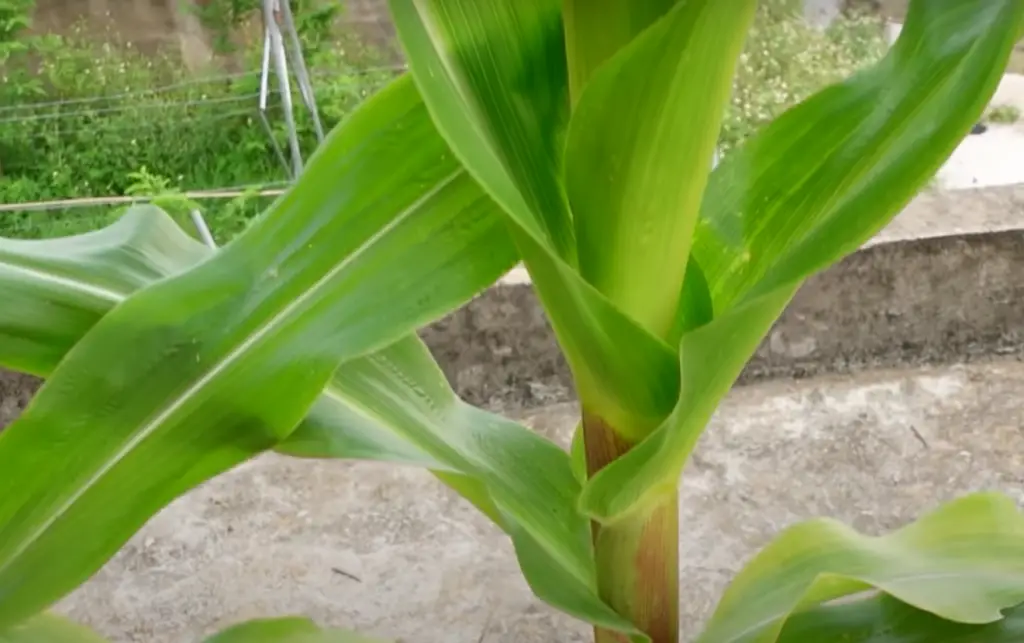
These are just a few of the companion plants that you can use to protect your corn crop from pests and improve its health and productivity. Experiment with different combinations of flowers, herbs, vegetables, and shrubs to find out what works best in your garden!
Geranium (Pelargonium sp.)
Geraniums attract beneficial insects that feed on pests and act as a living pest barrier. They also provide shade to the soil which will help to reduce water stress on your crop. To get the best results, plant geraniums around the edges of your corn patch where they can be easily seen by beneficial insects.
Goldenrod (Solidago sp.)
Goldenrod attracts beneficial insects that feed on pests. It also helps to suppress weeds, which can be a major problem in corn fields. Finally, goldenrod provides nectar to pollinators, such as bees and butterflies, that will help ensure proper pollination of your crop.
Lacy phacelia (Phacelia tanacetifolia)
Lacy phacelia is a fast-growing annual that can be planted in early spring. It attracts beneficial insects such as hoverflies, predatory wasps, and ladybugs which will help keep pest populations down. Plus, lacy phacelia also fixes nitrogen into the soil making your corn plants healthier and more productive.
Sunflower (Helianthus annus)
Sunflowers are a great companion plant for corn because they attract pollinators, such as bees and butterflies, and beneficial insects that feed on pests. Sunflowers also reduce the spread of weeds by competing with them for sunlight and nutrients in the soil. Finally, sunflowers add a beautiful splash of color to your garden!
Sweet alyssum (Labularia maritime)
Sweet alyssum is a low-growing, fragrant flower that can be planted in mid-summer. It attracts beneficial insects such as hoverflies and lacewings that feed on pests, as well as pollinators like bees and butterflies. Plus, sweet alyssum adds a lovely aroma to your garden!
Yarrow (Achillea millefolium)
Yarrow attracts beneficial insects such as hoverflies and predatory wasps which will help keep pest populations down. Yarrow also helps to suppress weeds, making it an ideal companion plant for corn. Plus, it adds a beautiful splash of color to your garden!
Plants Corn Doesn’t Grow Well With
Not all plants make a good companion for corn, and it’s important to know which ones are bad for it. Here is a list of plants that should not be grown near corn.
Tomatoes
Tomatoes can cause disease in corn, so it’s best to keep them at least 25 feet away.
Eggplants
Like tomatoes, eggplants can spread disease and should not be grown near corn.
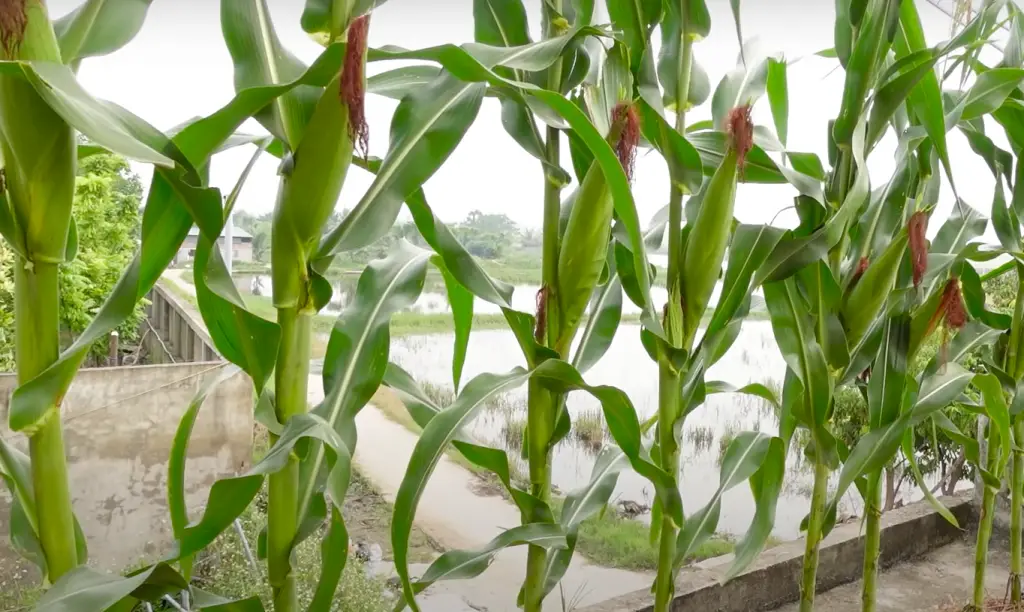
Plant them at least 25 feet away to avoid potential problems.
Cabbage family
The cabbage family, which includes broccoli, cauliflower, and Brussels sprouts, can stunt corn growth.
Fennel
Fennel can spread disease to corn, so it’s best to keep them at least 10 feet apart.
Onions
Onions can attract insects that may damage corn, so plant them away from your corn crop. A distance of 25 feet is recommended. [1]
By avoiding these plants and focusing on companion crops for your corn, you’ll be able to enjoy a higher yield and healthier plants. Looking for more information? Check out our guide on beneficial companion plants for corn!
FAQ
What is the best companion plant for corn?
The best companion plants for corn are Cucumber, Melons, Pole beans, and Borage. All of these plants offer benefits to corn when planted close by cucumbers and melons provide shade for the corn stalks, while pole beans and borage attract beneficial insects that can keep pests away. Planting these companion plants near your corn will help it to thrive and produce a bountiful harvest! [2]
Can I plant corn next to tomatoes?
No, it is not recommended to plant corn next to tomatoes. Tomato plants can draw away important nutrients from the soil that are needed for corn growth. In addition, tomato pests and diseases can spread to the corn plants and vice versa, leading to potential crop loss. [3]
Can you plant corn next to each other?
To prevent cross-pollination between different corn varieties, it is necessary to plant only one variety of corn in the garden at a time. Corn should also be planted at least 30 feet away from other corn to prevent cross-pollination. [4]
What corn is best for three sisters?
The three sisters is a traditional Native American farming technique that involves planting corn, beans, and squash together in the same area.

Any type of corn can be used for this purpose, but there are certain ones that work better than others. Field corn is usually preferred because it has larger kernels and grows taller plants, making it easier to manage companion plants around them. Sweet corn varieties tend to be more compact and not well suited for the three sisters method. Popcorn may also be an option if you want something decorative as well as edible! [5]
No matter which type of corn you choose, keep in mind that your companion plants will need plenty of space around them to allow for growth and healthy development. You’ll also need to consider the amount of light and water the plants need to thrive, as well as any potential competition for resources in your garden. With careful planning, you can select companion plants that will work together with your corn plantings to create a productive and attractive garden!
Useful Video: The Best Companion Plants For Corn & A Few Plants To Avoid
Conclusion
Companion planting with corn is a great way to diversify your garden and bring in beneficial companions. By choosing the right companion plants for corn, you will be able to maximize the growth potential of your plants while keeping pests at bay. Remember that corn needs plenty of space, sunlight, water and fertility so be sure to provide it with these elements before adding any companion plants. With the right combination of companion plants for corn, you can reap the many rewards that come from having a thriving garden! Happy gardening!
References:
- https://www.ruralsprout.com/corn-companion-plants/
- https://www.masterclass.com/articles/corn-companion-planting-guide
- https://www.southernliving.com/tomato-companion-plants-6527207
- https://www.weekand.com/home-garden/article/close-can-plant-different-types-sweet-corn-18007736.php
- https://www.almanac.com/content/three-sisters-corn-bean-and-squash





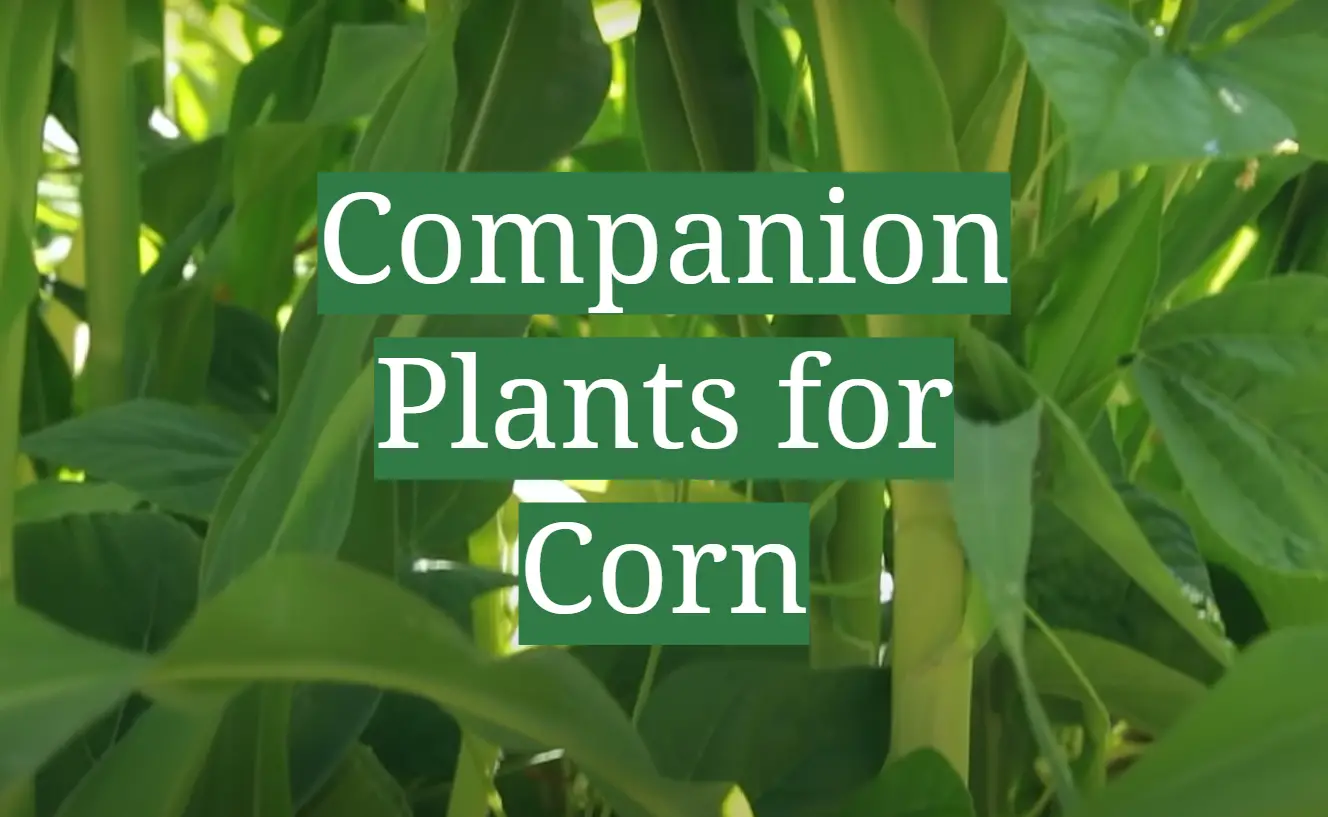




Leave a Reply
View Comments